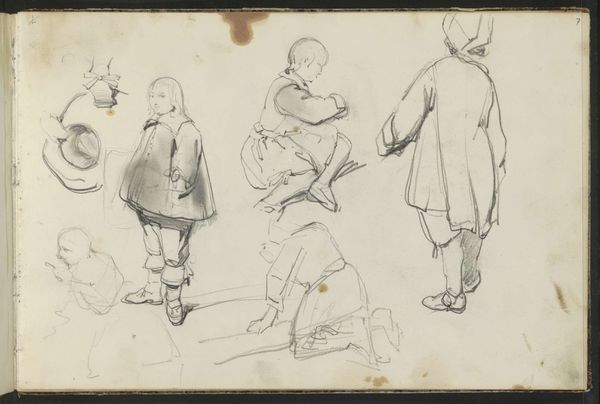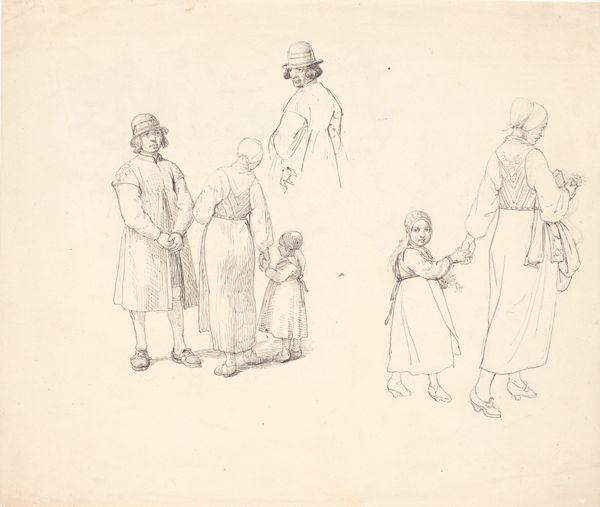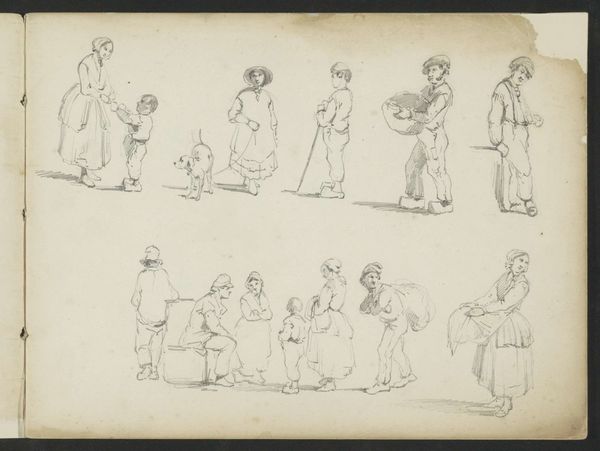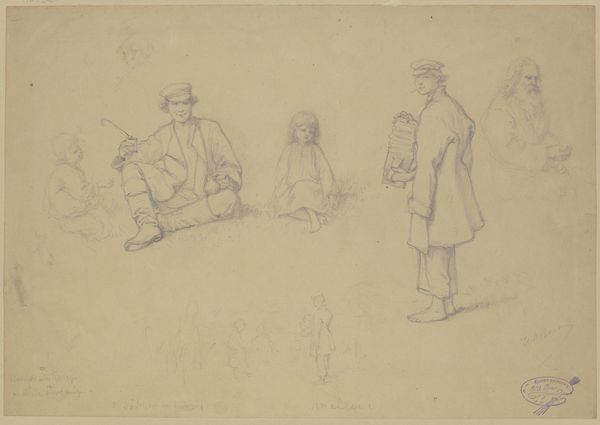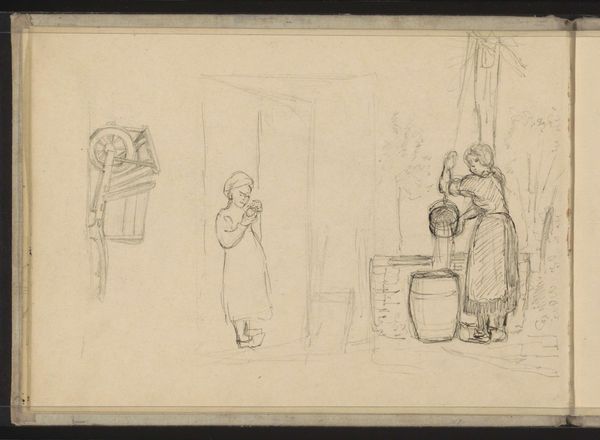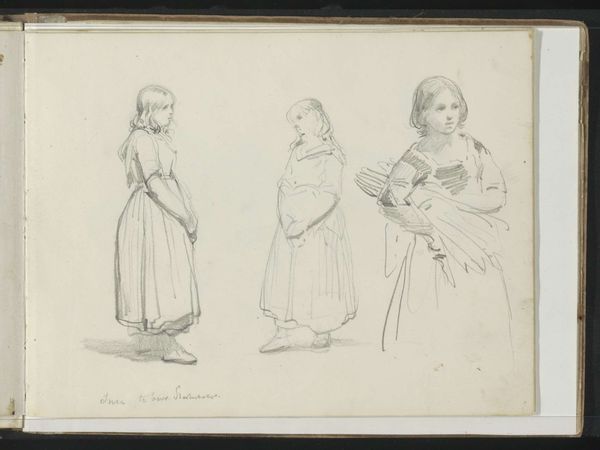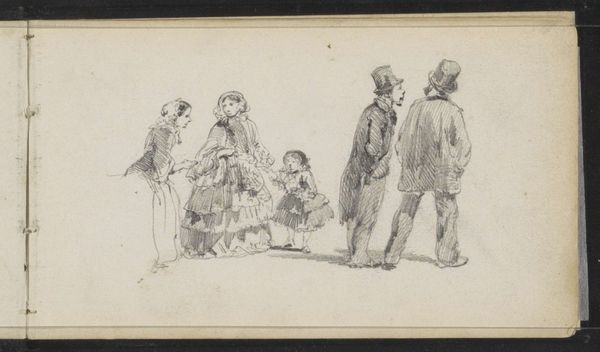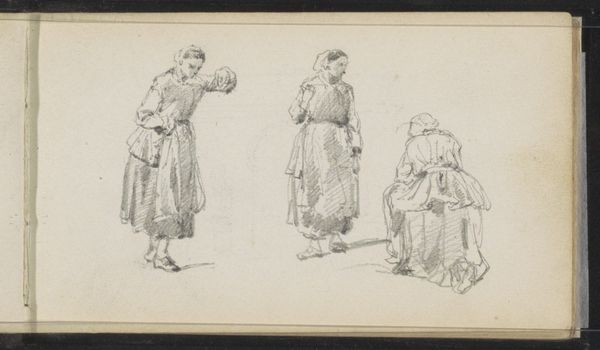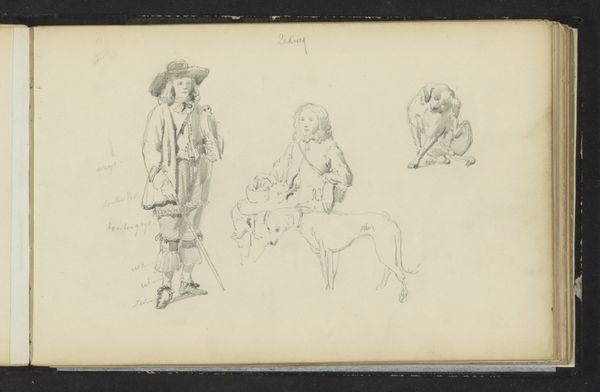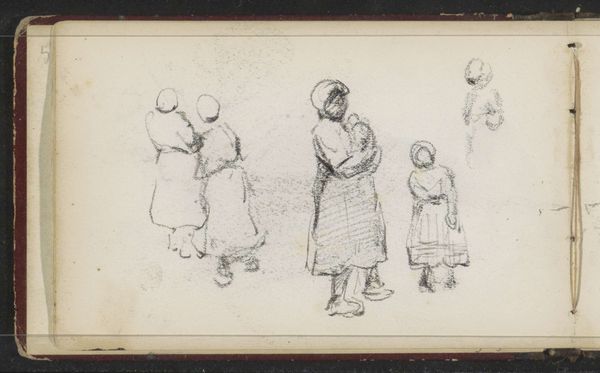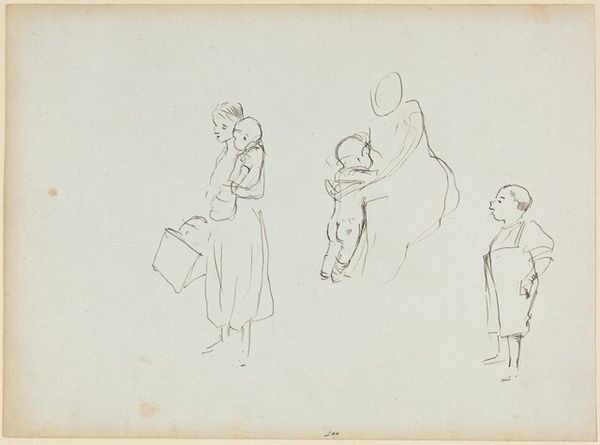
Boerenjongen met kruik, meisje met schort en kap en een jongen leunend op een tafel 1842 - 1868
0:00
0:00
johannestavenraat
Rijksmuseum
Copyright: Rijks Museum: Open Domain
Curator: This drawing by Johannes Tavenraat, titled "Boerenjongen met kruik, meisje met schort en kap en een jongen leunend op een tafel", dates from the mid-19th century and resides here at the Rijksmuseum. Editor: Well, right off the bat, I notice the subtle realism achieved with what seems to be humble graphite. The muted tones really emphasize the day-to-day reality and evoke the time. Curator: Absolutely. And focusing on the materials, Tavenraat uses a fairly simple pencil, likely one readily available at the time. Its very accessibility would have opened artmaking to a broader spectrum of society, shifting the landscape of who could be an artist. Editor: Indeed, it reminds me how images of peasantry became increasingly popular at the time. The young boy holding the pitcher...is it me, or is there something faintly classical about him? Perhaps hinting at the timeless values of labor and humility. Curator: Possibly. The figures are indeed depicted in what appear to be the traditional rural clothing of the time. Consider how such garments would be produced, the textures of coarse linens and homespun fabrics which tells its own story of local economies. Editor: That’s a keen observation. Focusing back on symbols, I can't ignore the prominence of the pitcher. Water vessels often represent purity, sustenance. Notice also the girl with an apron. This uniform isn’t simply clothing; it’s an emblem, signaling domestic duty, service. Curator: Fascinating. The choice of ordinary people becomes a significant material act when viewed from this lens. Tavenraat elevates the commonplace into an artistic subject, subtly celebrating their work through this drawing medium. Editor: Very insightful. What I take away is how Tavenraat prompts a contemplation on rural life. I wonder if, on another look, he aimed for less reality, more of an imagined past that reflected an agrarian idyll. Curator: Maybe. In any case, through these observations about production and materials, or in reflecting about the work as social imagery, we glean more insight into the artwork’s richness. Editor: Precisely, making this study an object imbued with far deeper connotations than one would gather on a quick look.
Comments
No comments
Be the first to comment and join the conversation on the ultimate creative platform.
